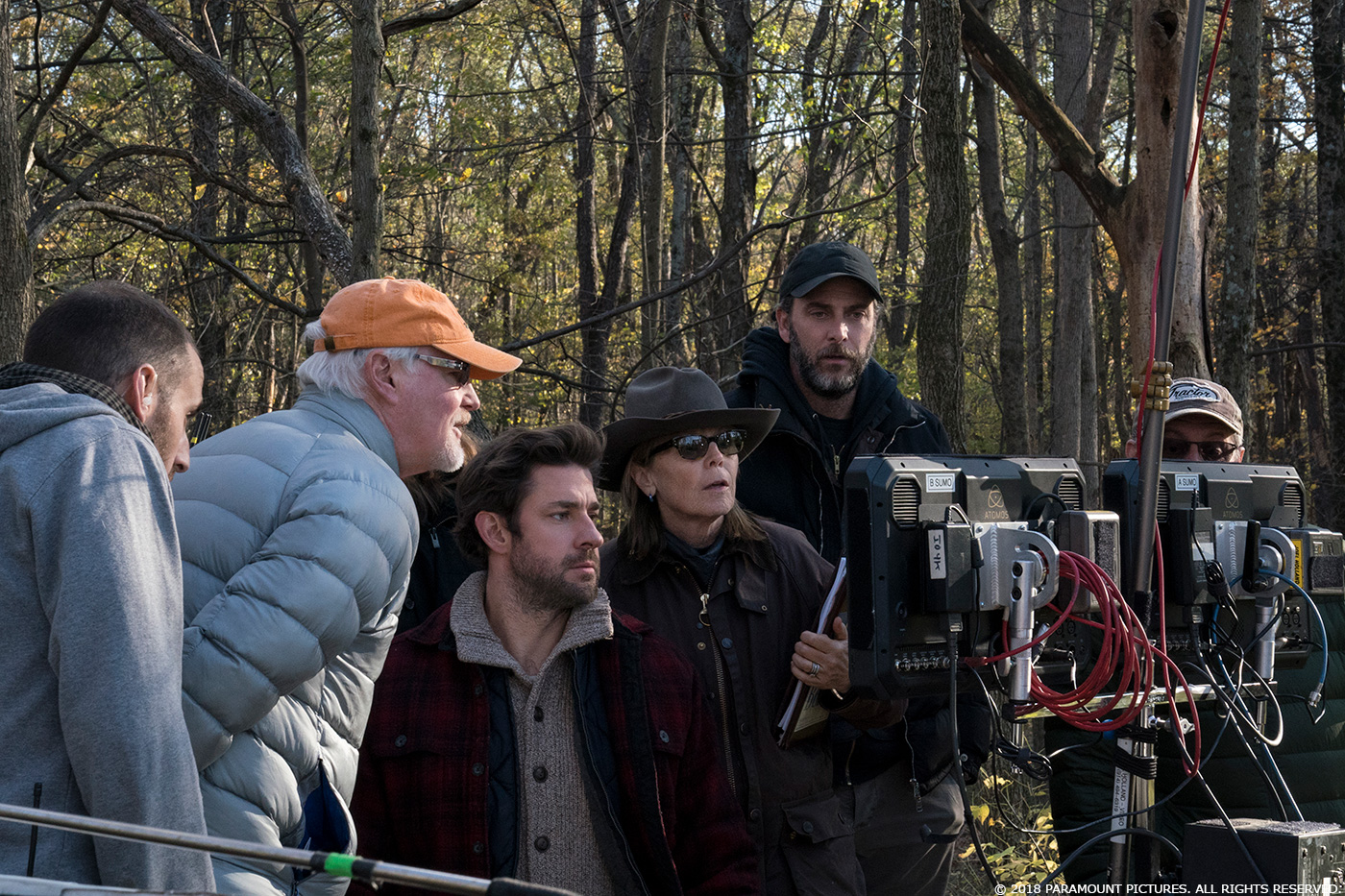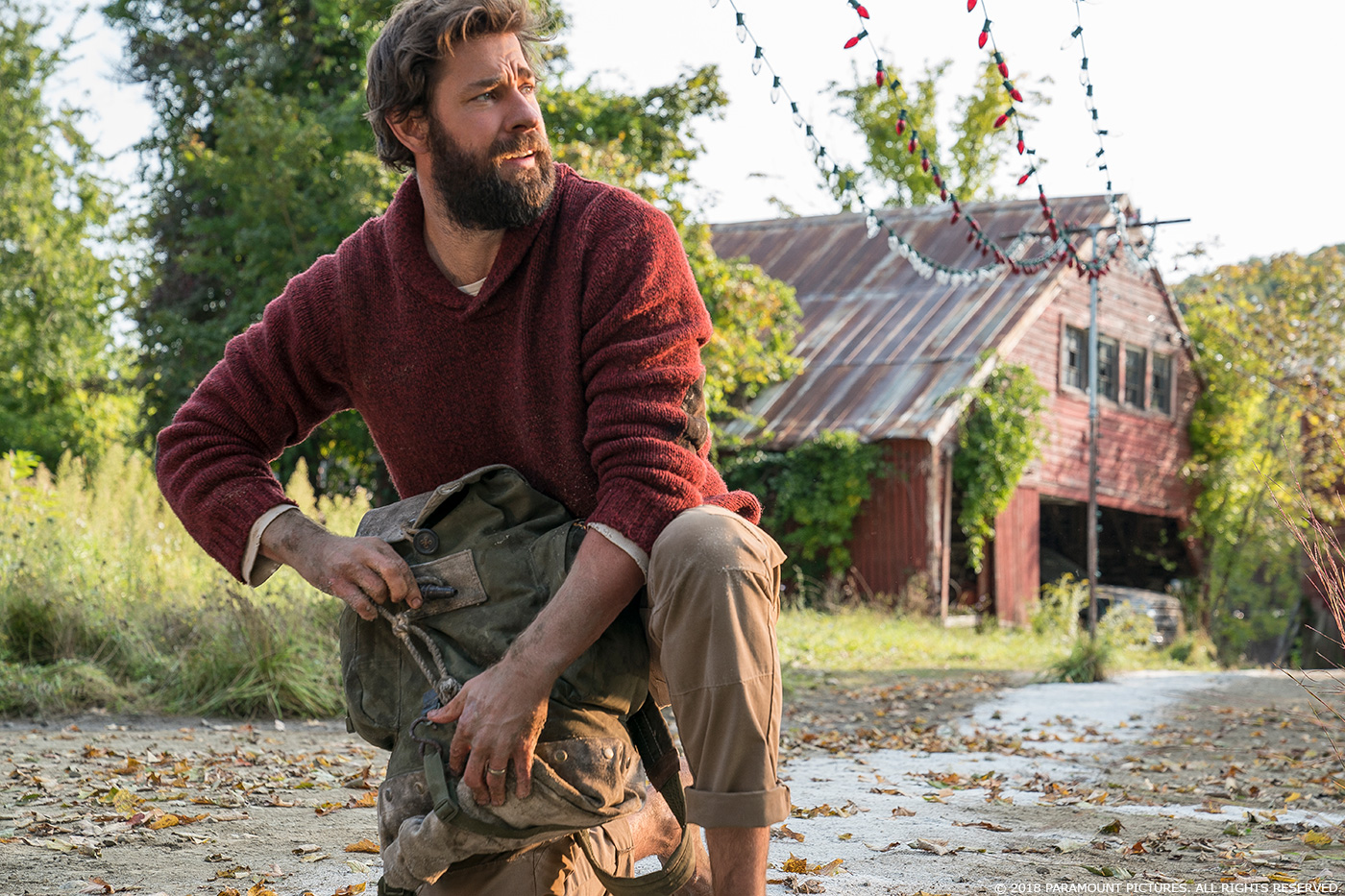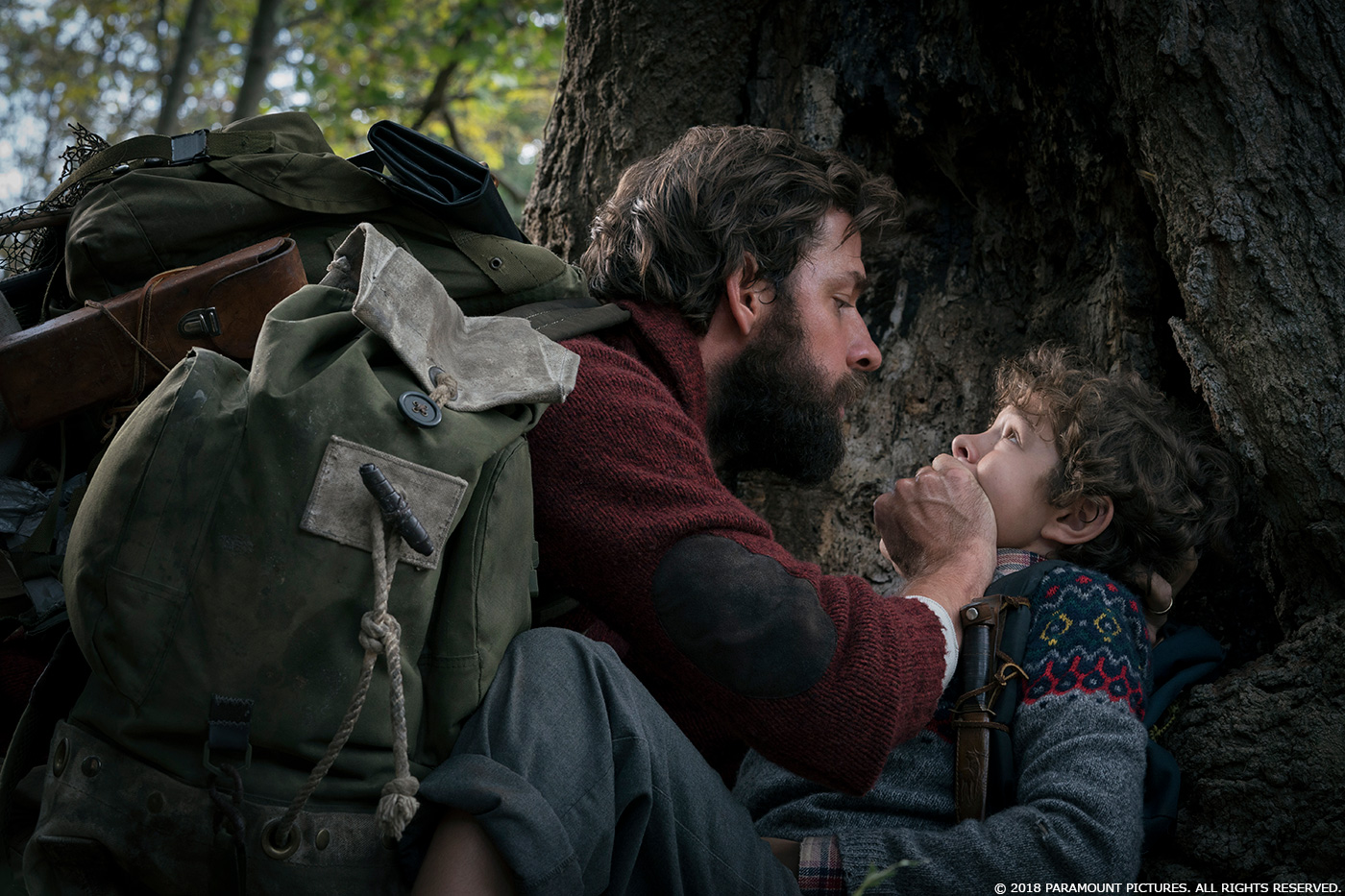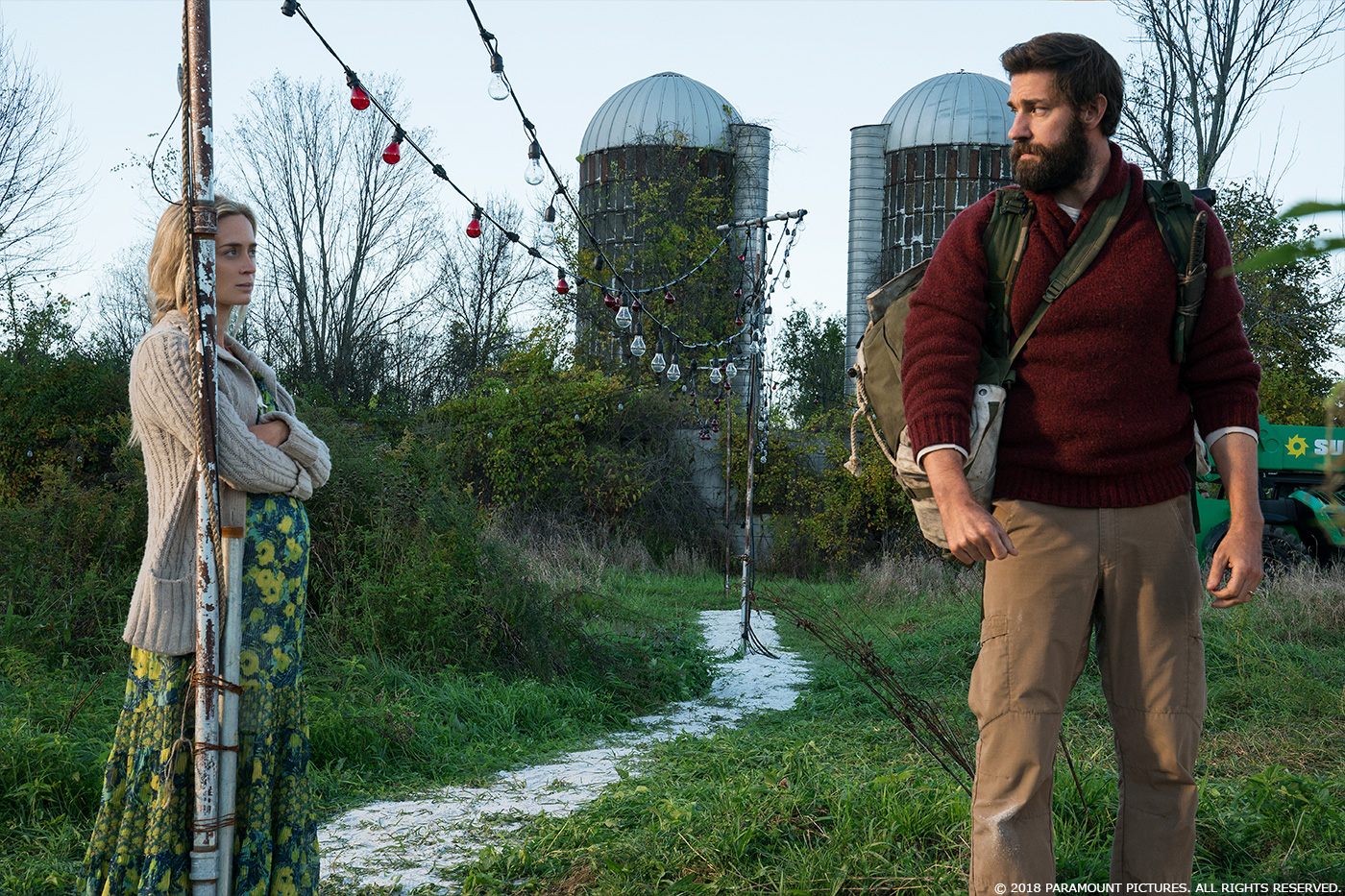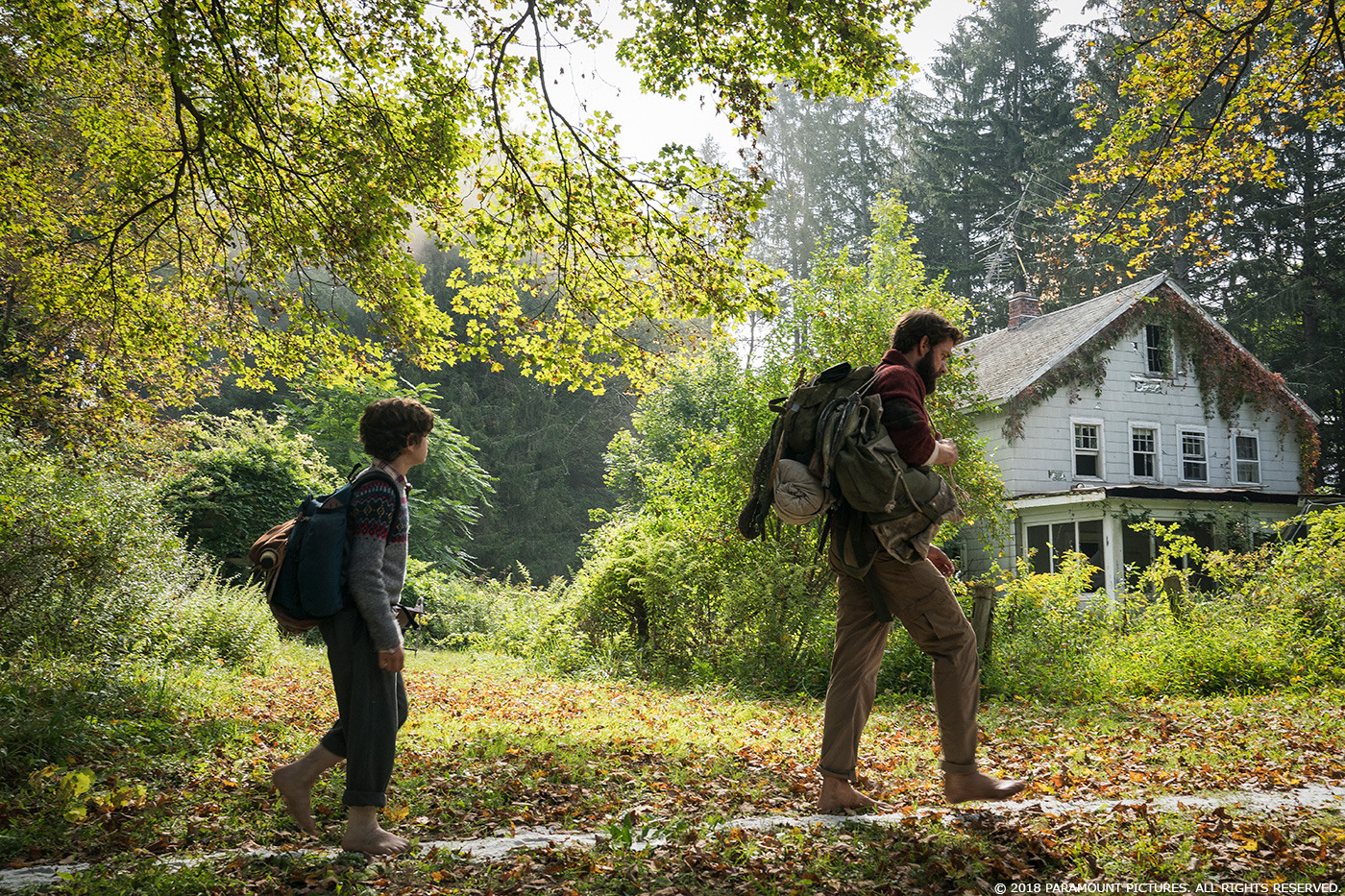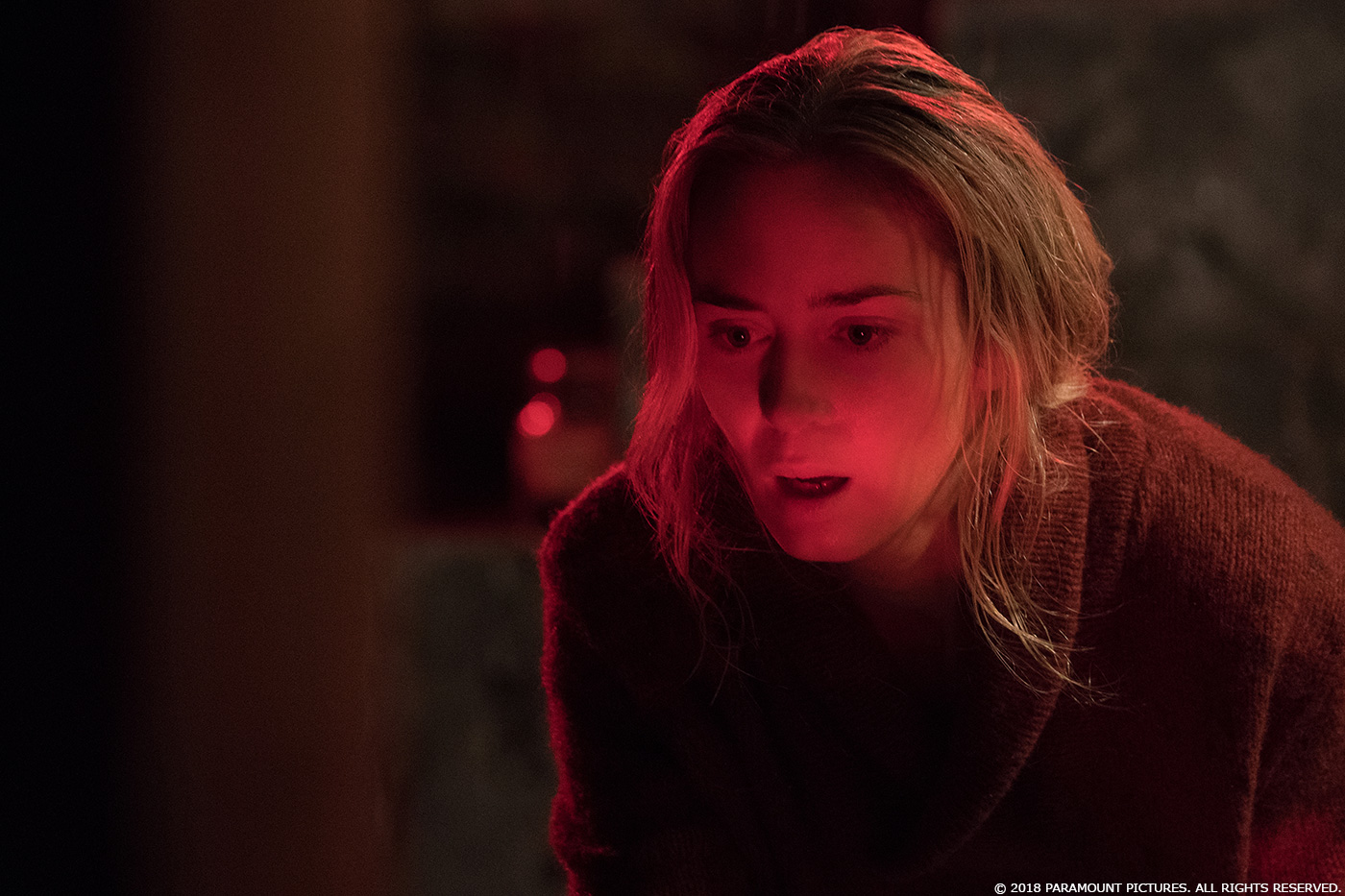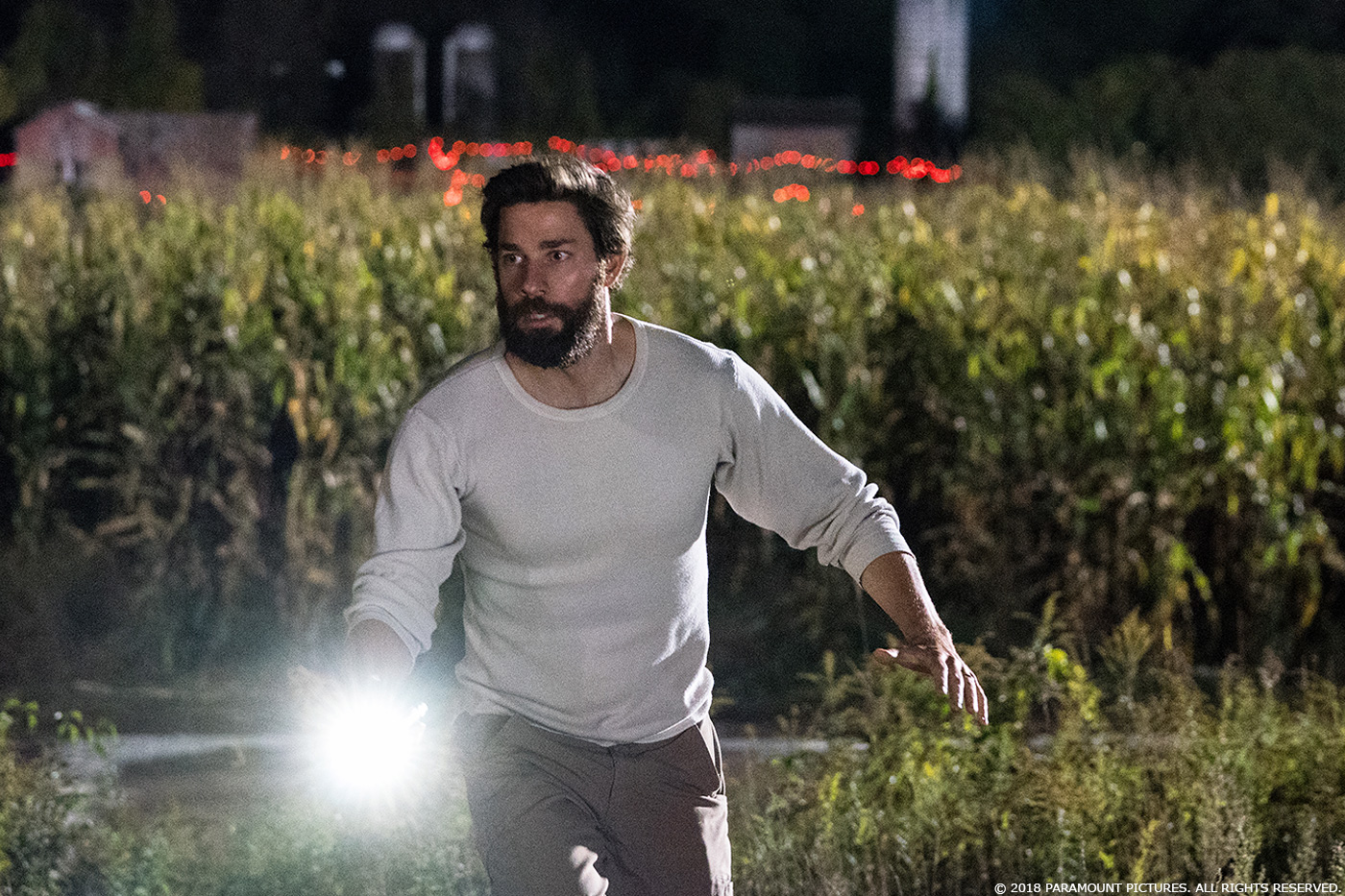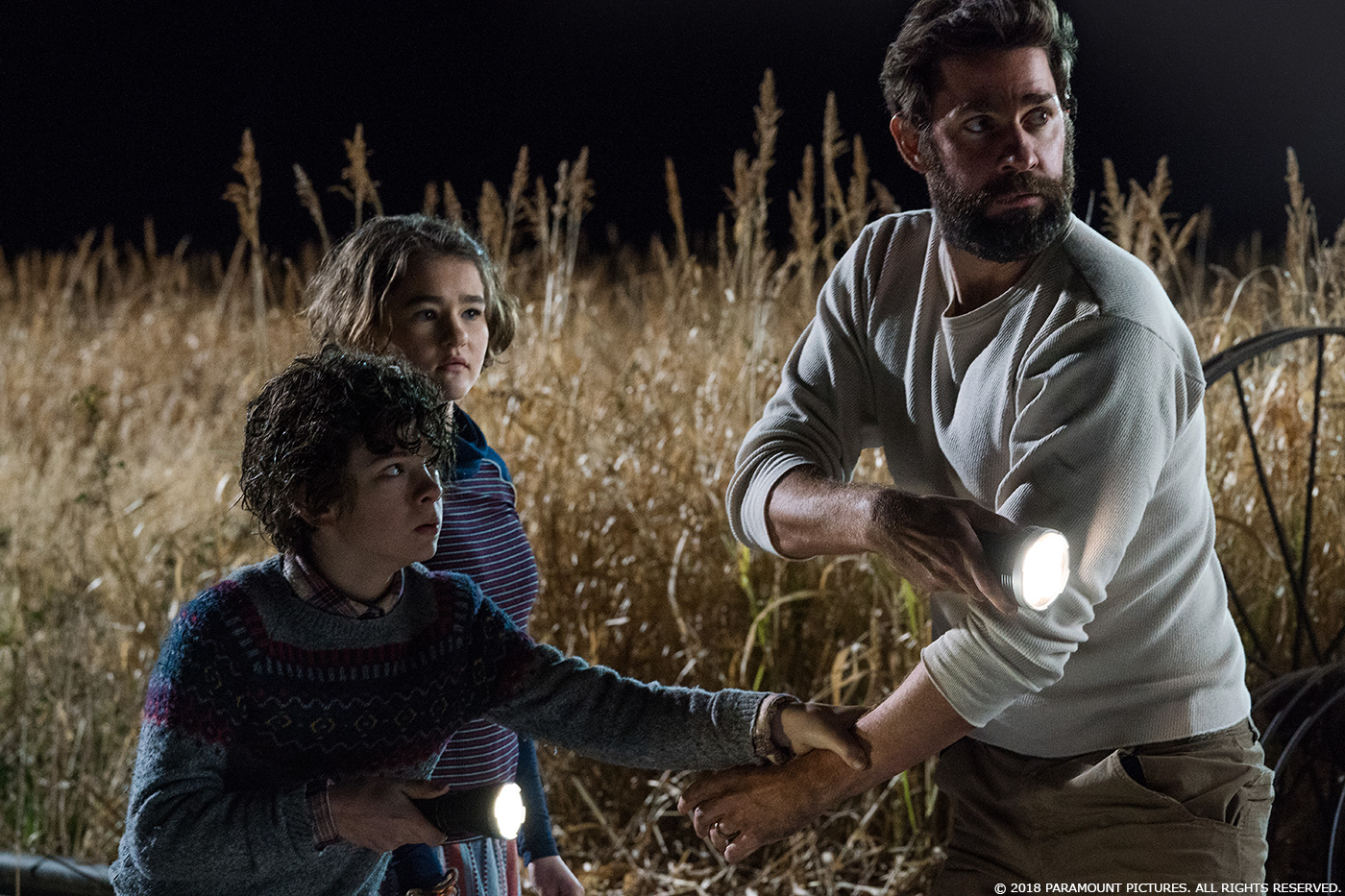In 2014, Scott Farrar explained the ILM‘s work on TRANSFORMERS: AGE OF EXTINCTION. He then took care of the effects of films like SELMA, 13 HOURS and TRANSFORMERS: THE LAST KNIGHT.
Last year, Rick O’Connor told us about the animation work on TRANSFORMERS: THE LAST KNIGHT.
How did you get involved on this show?
// Scott Farrar: My executive producer, Wayne Billheimer, gave me the script just prior to flying back to New York to have a meeting with John Krasinski. The script was great. I was told I was going for a location scout, but instead it turned into a three hour meeting talking with John and Charlotte Christensen, the DP, about how to do the visual effects for A QUIET PLACE. John has not had visual effects experience and he was thrilled to be able to discuss the project with me, since I’ve worked on a lot of visual effects heavy pictures over the years. He still says he was blown away by the fact that I could casually talk about how we did the JURASSIC PARK kitchen sequence with the Raptors!
// Rick O’Connor: Scott Benza and myself share an office and our Producer Ryan Wiederkehr stepped in one day and said “We’re doing a scary monster movie!” I couldn’t have been happier. I grew up watching those types of films, but have rarely had the opportunity to work on them due to how costly visual effects are. Smaller films like A QUIET PLACE would usually have a man in a suit running around scaring actors, but this time we were hired to help create the beasts.
That’s the first big VFX movie for director John Krasinski. How did you help with that?
// Scott Farrar: John’s main concern, of course, was how do we do a creature? I told him that he would need to have a stunt actor on set wearing a tracking marker suit. This way John could direct the creature movements, lay down a blueprint for the motion and the camera operator would have better composition because someone was there to follow. Also, Emily Blunt, John’s wife, was with us for meetings. She had had experience in the EDGE OF TOMORROW working with effects people in marker suits. So, she said “…Just explain what you’ll need and he’ll make it happen!”
// Rick O’Connor: With our team of animators, Scott Benza and myself had a hand in figuring out how the creature would move for John. He had a lot of ideas that he wanted us to try out and we were happy to investigate what this thing could do. We did a lot of rough tests trying out a lot of weird ways the monsters could move and I’m happy with where we landed with it. It’s a slow methodically thinking creature always on the hunt for prey. When it zeros in on something it strikes at lightning speed. At times the editors sped up our animation when we were done to have the creatures move even faster.
What was his approach and expectations about the creatures?
// Scott Farrar: John referred to ALIEN and JAWS as movie styles that he wanted to emulate. I totally agreed, it’s far more effective to show as little as possible for most of the movie, increasing the tension by slowly revealing the look of the creature near the end.
// Rick O’Connor: He wanted them to be creepy and scary as hell. When we first started the project the creature had a completely different design. It was a hulking, more humanoid creature with sharp spikes on its back, horns and blades that protruded from its arms. It was also completely covered in flaps that would open to reveal multiple ears covering its body. With about 2 months to go, John came to the conclusion that as cool as the creature was, it wasn’t fitting the tone of the film he was piecing together in the editing room. It took about a month to design a creature that John was happy with leaving us with about a month to animate the entire movie. We didn’t necessarily have time to test the creature at this point so all of our discoveries were made in the shots as we raced against the clock.
How did you organize the work with your VFX Producer?
// Scott Farrar: Ryan Wiederkehr and I tried to guide John through the complexity of visual effects production especially during post. Our main concern was to get every shot to a good-looking level, before we would go back to refine anything. I structured it that way because there was such limited time in post.
// Rick O’Connor: Ryan Wiederkehr and Luke O’Byrne are the best! They were on the front line of this project and were the main contact point for John and his editing team. They would talk with John daily to come up with a game plan for shots they would need us to deliver early to help them build their edit. As you might imagine, it’s tough to edit a sequence featuring a monster without a monster. Ryan would prioritize shots in an efficient way so we would be sure to deliver on time. If it wasn’t for our world class production team keeping things in order, these movies would never see the light of day.
Can you tell us more about the previz and postviz work?
// Rick O’Connor: As I mentioned earlier, we did a lot of rough motion studies on the older version of the creature. We did some crazy things with it! There was a test where it popped from pose to pose which looked really weird but not scary at all. It almost looked like he was break dancing – Not exactly the look we were after. We had a test where it traveled down the side of a barn in a cartwheel type manner which ended up looking like a sticky octopus toy thrown against a window. The most successful tests were when it moved slowly while hunting and then breaking into a fast run to attack. It was almost like a shark on land.
When the creature went through the redesign we maintained the idea of slow moving until it needed to attack. The first sequence we worked on was the flooded red room and was instrumental in figuring this guy out. We found that the creepy slow movements were successful. We also developed how his head searches for sound by slowly rolling his head from side to side to scan its surroundings.
The creatures have a great look. How did you work with the art department on them?
// Scott Farrar: Jeffrey Beecroft, Production Designer, and the film’s art department produced the original style of the creature. The ILM Art Department used that and embellished it quite a bit until the movie was shot, then some major changes occurred. Once the movie was in rough cut, John and his producer, Drew Form, called to say “the creature isn’t scary enough“. We agreed, even though we didn’t have much time to make a change – we only had two months before the film’s release. So we did a complete redesign of the creature based on photos, movie ideas, art and our own art department team working on it. And the creature ended up being MUCH scarier looking. And so we named him “Happy!”
// Rick O’Connor: The only real suggestion I had in the visual design of the creature was to limit the number of ears it had. The monster had a small amount of screen time so I thought the storytelling should be clear in each shot. If it is listening the hearing devices should be instantly and visually understood by the audience. Ears on a foot, arm or chest might confuse the audience without more time to explain it, but ears on the side of the head is clear to everyone. The ILM Art Department concept artists really did a great job coming up with a unique design that send shivers down your spine.
How did you work with the SFX and stunt teams for the creatures interactions on set?
// Scott Farrar: I did second unit work with the creature/stuntman in the marker suit and I worked with John whenever the creature was on set to help develop the style of movement. The SFX team and I came up with rig ideas to build for the silo sequence. For instance, they made these fantastic green painted claws that could tear into the silo door (made of heavy aluminum foil material) when the creature claws at the broken door.
Can you explain in details about their creation?
// Scott Farrar: John wanted the creatures to look as if they had evolved over time. They were blind, had a hard exoskeleton for protection, but could hear very acutely. To convey this we started with flaps that would open on the head, shoulders, chest, back and thighs. But eventually that proved too difficult to understand visually so we simplified and put flaps only on the head and gave the creature ear holes so the audience could understand how it could hear so well.
Did you received specific indications and references for their animation?
// Rick O’Connor: Once the creature had the updated design John sent us a run cycle of a bat that he had found. He loved how creepy and weirdly unusual it looked. We applied the same mechanics to the monster and though it looked good once we dropped it into a shot however It made the creature look too jovial and playful. We then decided to alter the run pattern into a more straightforward run that emulated the speed and agility of a wild cat.
In the flooded red room is where we discovered a cool shape that I wanted to carry on throughout the film. In the shot where the creature dove into the water it produced a really striking silhouette. It was hunched over and the elbows jutted upward creating an eerie M shape. I thought it was a perfect and unique visual stamp for the creature.
Can you tell us more about their animation and especially their faces?
// Rick O’Connor: It actually took a bit of time to get the flaps to a place that worked for the film. At first we treated them like bug antennae where they were always twitching and “feeling” for sound. It didn’t work for the creepy tone of these guys. We then had them flower open with minimal motion but then it ended up looking too much like the STRANGER THINGS monster. John had the idea that the flaps only open when the creature knows it is near the prey and uses them to zero in. He described that the motion could resemble what seaweed does underwater. If the creature hears something to the left then the flaps move in that direction as if caught in a current. A wave pattern would flow through them and then the head would follow the direction of the sound. The flaps also have the ability to hinge any direction they want and don’t always pivot from the back. This helps the creature shape the flaps to funnel sounds from any given direction.
The creatures are moving really fast. How does that affect the animation work?
// Rick O’Connor: You always want the physicality of whatever you’re animating to dictate how it will move. Bigger creatures will take more time to get to top speed than a smaller creature, but in this case, the speed of the monster needed to be unexpectedly fast. The contrast from the creepy slow search mode to top speed attack mode needed to shock the audience. Something this large probably couldn’t move as quickly as they do in the movie, but for the sake of freaking out the audience we broke reality.
In one standout moment, one of the creature interacts with water. How did you manage these simulations?
// Rick O’Connor: There was an actor standing in for the creature who was wearing a jumpsuit. He provided the placement and timing marks that the creature had to hit. We’d comp the monster over the jumpsuit actor and do our best to line up its leg or arm with the actor so we could utilize some of the water that he disturbed the day the sequence was filmed. There were props that were floating on the water surface that we had to avoid the creature interacting so we could avoid doing extra paint work when possible. In the shot where the creature raises its head out of the water we again followed the timing of the actor breaching the water in an effort to use as much of the practical water as we could, but the size of the creature was so different that a fair amount of fluid simulation work was required to integrate him into the scene.
The creatures are mostly seen by night. How did you handle this aspect with the lighting?
// Scott Farrar: The dark color tones of the creatures helped immensely. If they were backlit or edge lit they fit into the night time scenes beautifully.
Can you tell us more about their look and texture?
// Scott Farrar: At one point there was concern about the color of the creatures. I said we were referencing the Peat Bog people, those are mummified humans that were trapped in Peat Bogs in Ireland and Denmark. Because they were in the bogs for centuries, their skin was the color of a dark leather, somewhat shiny and coffee colored. It was a perfect reference for us to follow.
Can you tell us more about your collaboration with VFX supervisor Scott Farrar?
// Rick O’Connor: Scott Farrar was definitely the VFX driving force behind this project. We has on location collaborating with John on the day to day needs of the shoot.
In regards to animation he would offer ideas and solutions to certain problems. His office is a few doors down from mine and I knew Scott needed to talk when I heard him sing out the word “Animation!” pronounced “ANIMASHHHUUHHHNNN!!!” I’d saunter over to his office where creative conversations took place.
The man knows his stuff so his contributions always make a shot better. I cannot say enough about Scott’s contribution to the project – He’s a master.
Which sequence or shot was the most complicated to create and why?
// Scott Farrar: Because we did a total redesign of the creature, its paint and texture was not ready for close-ups till the very last week. So as soon as we had a rough model with rigging that we could animate, we put it into the background shots first and as its look got better we would do the shots closer and closer to camera. The last shots we did were the close-ups of the ear holes and the flaps opening. Those were not ready till two days before delivery with all the simulations of muscle, tendons, slime and goo! Saving the best for last I suppose.
// Rick O’Connor: Getting the creature to work in such a short amount of time was the real trick. We had to quickly decide on a walk pattern, a run pattern, how do the flaps work, how do the ears vibrate when we see them in the close up shots? We soon learned that our first instincts on ideas were the best ones. We’d try other ideas, but then quickly circle back to the first blocking take.
A big challenge with the monster was figuring out a walk pattern that worked for his design. He has very long front arms and shorter legs. We decided to follow the foot fall pattern of a gorilla, but we had to be careful because we could easily fall into the look of an elderly person using a walker. Nothing scarier than an old, blind alien using a walker to hunt you down!
What is your favorite shot or sequence?
// Scott Farrar: The flooded red room shot with the creature going underwater is probably my favorite. It was also our first final! It was just so cool and creepy and we were able to retain the floating objects in the water, so it worked perfectly with her animated character.
// Rick O’Connor: The flooded red room is a great sequence. I love how creepy and well thought out the sequence is. The audience slowly discovers things during the sequence at the same time Emily’s character does. It’s wonderfully done and a signature moment in the film.
Each sequence in this film is so well crafted not only narratively, but visually as well. The creature feels so different and memorable from the silo attack, truck attack to the end basement sequence. Each has its own specific color pallet and build up of dread and suspense. Either it’s a slow burning eerie sequence or full on shark attack on land. All scary, but in their own unique way.
What is your best memory on this show?
// Scott Farrar: On set John was slowly gaining confidence in how to do visual effects. To reinforce his directing during a particularly tough shot in the basement I yelled, “It’s in the movie!”. He loved that line, and he kept using it for the rest of the show!
// Rick O’Connor: I have to say, when we reviewed shots with John was always a treat. He is so enthusiastic and appreciative of our contributions. Each review was like a sporting event with the amount of WOOOOO!!! and YEAHHHHHH!!! he’d exclaim after seeing shots for the first time. He had great ideas for the creature and he was always eager to hear our suggestions as well. It was a very inspiring and memorable collaboration.
One particular review session comes to mind, during this session we could see Emily walking around behind John. He called her over to take a look at our work. Up until this point she hadn’t seen much, if anything of the creature. Her first response was priceless. “OH my god, that is so horrid! I loath it!” The delight on John’s face couldn’t have been any better. Who doesn’t love grossing out their loved ones? Emily stayed for the rest of our review and together, a sweet husband and wife collaborated with their animation and visual effects team creating one of the most murderous beasts in cinema history. Heck of a date night!
How long have you worked on this show?
// Scott Farrar: Six months.
// Rick O’Connor: We spent about 3 weeks total doing some motion tests and then about a month animating in shot production for the film.
What was the size of your team?
// Rick O’Connor: We had 17 animators at ILM.
What’s the VFX shots count?
// Scott Farrar: 108.
What is your next project?
// Scott Farrar: Has not been announced yet.
// Rick O’Connor: The Transformers BUMBLEBEE Movie.
A big thanks for your time.
// WANT TO KNOW MORE?
Industrial Light & Magic: Official website of ILM.
© Vincent Frei – The Art of VFX – 2018


